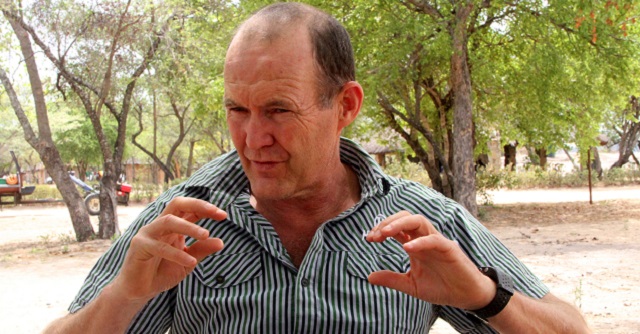
The Sunday News

Feature Rtd Brigadier Abel Mazinyane
THE people of Zimbabwe will never forget that during their hour of need, the people of Angola stood by them even if their own independence was still at its infancy. Furthermore, enemies of the Angolan people were trying to strangle the young state in its cradle.Angola first opened a training camp for ZPRA cadres in 1977 at Boma near Luso town (now Luena). Another camp was opened near Luso to train tank, armoured cars and amphibious reconnaissance crews. Boma was bombed by the Rhodesians in 1978. A new camp was opened at Kakulama about 30km from Malanje town in Malanje province for the continuous training of Zimbabwean freedom fighters.
ZPRA lost around 200 men during the bombardment of Boma. There were other deaths by natural causes and all are buried in mass graves in Angola.
The Angolan government also opened a camp in Luanda to treat and rehabilitate the injured, sick and disabled ZPRA, Umkhonto Wesizwe (SA) and PLAN (Namibia) freedom fighters.
Some of the former ZPRA cadres who were trained in Angola are Brigadier General Sydney Bhebe, Mbayiwa (later to be officer in ZPRA communication department), Jabulani Sibanda, Brigadiers Richman Ncube, J B Dabengwa, Ben Matiwaza, Svaruka (who started as commissar but ended up as camp commander and all the above later became instructors at Boma camp) just to mention a few. ZPRA training in Angola was run by Soviet and Cuban instructors at the invitation of the Angolan government.
ZPRA trained more than 8 000 men in Angola divided into four groups of 2 000 plus per group – not to mention the signals, engineers and other specialists who added a lot of quality to ZPRA operational effectiveness.
Fighters trained in Angola brought a new dimension to ZPRA’s fighting mode. When the first group trained in Angola was deployed in Mushika/Feira ZPRA region under the command of retired Brigadier General Collin Moyo (Rodwell Nyika) the region was able to push deeper into Mashonaland West as far as Zvimba, Kachuchuta, Mahuwe, Rafingora, Mhangura, Mashumbi Pools and Chipuriro.
Two companies of Angolan trained guerrillas were deployed for the defence of Freedom Camp (FC) which was also ZPRA headquarters. The inmates of the camp were subjected to strict routine by these no-nonsense soldiers. FC was also used as a camp for sick, injured and comrades in transit. These comrades were allowed to leave camp with a pass but to be back before its expiry. However, comrades preferred to sneak out to “Filabusi” (local villages) and sneak in without passes.
Comrade Andrew Ndlovu who was once a victim of these regulations, recently took me down memory lane, when on his return from specialist training in the USSR, one day after sneaking out of the camp returned to find the tent he had been allocated gone. His colleagues had been taken to the front. He tells me the administration read him the riot act. He was told that he would be treated differently until the Chief of Operations decided his status. I am yet to get the full story from Cde Ndlovu, however, what I know is that he was soon in operation across the Kariba.
When the Angolan trained group took over guarding duties things changed. Anyone who tried to sneak into the camp without a pass took a great risk. Cde Alfred Nikita (Mangena) proudly called them the fire force until one day an incident (when some people tried to sneak into the camp through an unofficial route) caused them to fire all arms around the camp for nearly an hour. Cde Tsheza’s artillery crew which was manning a 14.5 machine gun gave fire support. I think this was their signature that there were new guys in town. We were in trouble.
They were replaced by two companies that had completed training at Mlungushi and were commanded by Cde Tito (Air Vice Marshal Titus Abu-Basutu). Saved by the bell? Wrong! This group was uncompromising in carrying out its duties, but at least they were not trigger itchy.
When one group was sent to the front but was unable to reach the base, they were to reinforce and spend a night 3km or so from their destination. Early in the morning they spotted what they thought to be guerrillas from the base they were to reinforce moving past their positions. Thinking that these were their comrades coming to take them to the base, they called out to them. It turned out that these were Rhodesian white soldiers who had painted their faces black. The Rhodesians immediately fired at the comrades. This Angolan-trained group realising these were not comrades but the enemy, fired back and advanced forward to encircle the enemy. The Rhodesians who were accustomed to guerrilla tactics of hit and run retreated in disarray. The Rhodesians had been moving to the base to attack it at first light with the support of aircraft. Now they were being forced to fight without air support. From this engagement we captured some quantity of war material.
Retired Major Ernest Sibanda (Fabion Mutero) who was commander of region two of the Northern front says when the group trained in Angola was deployed in his area; it helped consolidate their semi liberated areas. They had the capacity, tactical capability to deny the enemy the ground they had taken from him. He tells me of areas like Jaba Tshaba in Lupane and also Silobela where his guerrilla units would follow trails of fleeing Rhodesian soldiers.
In NF1 (Region one of the Northern front) commanded by Tshipa (John Nyampingidza), the group trained in Angola helped revolutionise the crossing of the Zambezi.
This was about creating a naval like unit that defended and denied the enemy access to guerrilla crossing points, while maintaining a permanent unit ferrying guerillas across. The enemy ended up trying to infiltrate these areas using Selous Scouts disguised as guerrillas. Tshipa was nearly captured by the Selous Scouts through a coded message (a leaf with a blood stain), saying there was an injured comrade to be picked.
Tshipa asked Mr Mkwananzi (A Zambian civilian of Zimbabwean descent) to drive him and Mike, one of his field commanders, to the point where they were to pick the injured comrade.
They drove along the Zambezi on the Zambian side until they came across a branch of a tree laid on the road. This was a sign for them to stop and pick the injured comrade. Tshipa told the driver to drive past the broken branch and stop about 150 metres away.
As they stopped, a guerrilla emerged from a position just behind the spot where the broken branch lay, carrying a PK (a Russian light machine gun). When he came to where they had stopped he answered loudly when Nyampingidza asked him: “We are four comrades! We crossed yesterday!” He was speaking in English only.
Mike (Jimmy Moyo) who became suspicious said: “This is a Selous Scout, may I shoot him?” Mike shot him and Tshipa got hold of the PK. As this pseudo guerrilla had wrapped himself with a PK ammunition belt, he was dragged by the car as it drove away.
The shooting provoked some heavy firing from the position he had emerged. This was a Selous Scout unit that had crossed into Zambia.
Tshipa says with the Angolan trained reinforcements in his region they were able to accompany a battalion that was commanded by Smile (late Colonel Madubeko) and move it up to Tsholotsho without trouble because the enemy had been cleared. This also made it easy for uMkhonto Wesizwe to pass through.
Retired Colonel Buster Magwizi, who was commander SF3 (Southern front region 3), is full of praise for the comrades trained in Angola. He says his region, which was between Masvingo-Beitbridge road and the South Africa/Zimbabwe border, got a boost by their deployment. They immediately penetrated up to Neshuro, Masvingo.
He describes their combat approach as “fire and advance”.
Comrade Stanely Nleya (Gagisa Doko) the former ZPRA Deputy Chief of Operations has this to say about the comrades who were trained in Angola: “They were combat aggressive, they believed in advancing as soon as they engaged the enemy.”
When the Soviet International Airline (Aeroflot) opened the Lusaka-Moscow route via Luanda, sending personnel for further training to USSR, Cuba and other socialist countries became easy for ZPRA.
The opening of a party representative office in Luanda improved communication and supply lines between ZPRA, USSR and other socialist countries. The costs of maintaining the office was mostly born by the Angolan government, despite the fact that it was still trying to find its feet.
When Angola attained its independence, it gave some of its assets in Zambia to fellow liberation movements who were still fighting for their independence.
Angola, Zimbabwe can never thank you enough.
HAPPY BIRTHDAY ANGOLA, MAY THE FUTURE GRANT YOU PEACE AND PROSPERITY.
Rtd Brig Gen Mazinyane is a former member of the ZPRA high command.



